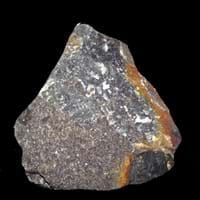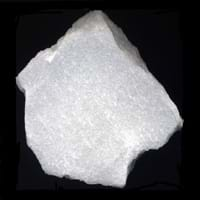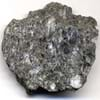Definition
Dolomite is a sedimentary rock containing more than 50 percent of the mineral dolomite by weight
Marble is a non-foliated metamorphic rock which is composed of recrystallized carbonate which is formed when limestone is exposed to high temperatures and pressures over a long time
Origin
Southern Alps, France
Egypt
Discoverer
Dolomieu
Unknown
Etymology
From French, from the name of Dolomieu (1750–1801), the French geologist who discovered the rock
From the Greek marmaros, shining stone and also from the English word marmoreal meaning marble-like
Class
Sedimentary Rocks
Metamorphic Rocks
Sub-Class
Durable Rock, Medium Hardness Rock
Durable Rock, Medium Hardness Rock
Group
Not Applicable
Not Applicable
Other Categories
Coarse Grained Rock, Fine Grained Rock, Medium Grained Rock, Opaque Rock
Medium Grained Rock, Opaque Rock
Color
Black, Brown, Colourless, Green, Grey, Pink, White
Black, Blue, Brown, Grey, Pink, White
Durability
Durable
Durable
Scratch Resistant
Yes
Yes
Appearance
Glassy or Pearly
Veined and Shiny
Interior Uses
Decorative Aggregates, Homes, Interior Decoration
Bathrooms, Countertops, Decorative Aggregates, Entryways, Floor Tiles, Homes, Hotels, Interior Decoration, Kitchens, Stair Treads
Exterior Uses
Garden Decoration, Office Buildings
As Building Stone, As Facing Stone, Garden Decoration, Office Buildings, Paving Stone
Other Architectural Uses
Not Yet Used
Not Yet Used
Construction Industry
As a Flux in the Production of Steel and Pig Iron, As a Sintering Agent in Steel Industry to process Iron Ore, As Dimension Stone, Cement Manufacture, for Road Aggregate, Making natural cement, Manufacture of Magnesium and Dolomite Refractories, Production of Glass and Ceramics, Serves as an Oil and Gas Reservoir rock
As Dimension Stone
Medical Industry
Taken as a Supplement for Calcium or Magnesium
Not Yet Used
Antiquity Uses
Artifacts, Jewellery, Monuments, Sculpture, Small Figurines
Artifacts, Jewellery, Monuments, Sculpture, Small Figurines
Commercial Uses
An Oil and Gas Reservoir, As a Feed Additive for Livestock, Gemstone, Metallurgical Flux, Production of Lime, Soil Conditioner, Source of Magnesia (MgO)
Cemetery Markers, Commemorative Tablets, Creating Artwork, Curling, Laboratory bench tops, Paper Industry, Tombstones, Used in aquariums, Whiting material in toothpaste, paint and paper
Types
Boninite and Jasperoid
Breccia Marble, Carrara Marble, Calacatta marble, Cultured Marble, Polished Marble, Honed Marble, Sand Marble
Features
Host Rock for Lead, Traps for subsurface fluids like Oil and Natural Gas., Zinc and Copper Deposits
Available in Lots of Colors and Patterns, Easily splits into thin plates, Generally rough to touch, Is one of the oldest rock
Archaeological Significance
Famous Monuments
Data Not Available
Al Aqsa Mosque in Jerusalem, Buland Darwaza in Agra, India, Capitol Hill Building, Washington DC, Charminar in Hyderabad, India, Chhatrapati Shivaji Terminus in Maharashtra, India, Ephesus in Turkey, Faisal Mosque in Islamabad, Pakistan, Humayun's Tomb in Delhi, India, Jama Masjid in Delhi, India, Lotus Temple in New Delhi, India, Louvre in Paris, France, Mysore Palace in Karnataka, India, Neuschwanstein in Bavaria, Palace of Parliament in Bucharest, Romania, Parthenon in Greece, Potala Palace in Lahasa, Tibet, Prophet’s Mosque in Medina, Qutb Minar in India, Saint Basil's Cathedral in Moscow, Russia, St. Peter’s Cathedral in Vatican City, Taj Mahal in Agra, India, Tower of Pisa, Italy, Victoria Memorial in Kolkata, India, Washington Monument, US
Famous Sculptures
Data Not Available
Ajanta Caves in Maharashtra, India, Bust of Artemis, Elephanta Caves in Maharashtra, India, Lincoln Memorial in America
Formation
Dolomite rocks are originally deposited as calcite or aragonite rich limestone, but during diagenesis process, the calcite or aragonite is transformed into dolomite.
Marble is a metamorphic rock produced from limestone in the earth crust. It is formed by the metamorphism of limestone.
Mineral Content
Clay Minerals, Pyrite, Quartz, Sulfides
Garnet, Graphite, Olivine, Pyrite, Quartz
Compound Content
NaCl, CaO, Carbon Dioxide, Magnesium Carbonate, MgO
CaO, Iron(III) Oxide, FeO, MgO, Silicon Dioxide
Types of Metamorphism
Burial Metamorphism, Cataclastic Metamorphism, Contact Metamorphism
Impact Metamorphism
Types of Weathering
Not Applicable
Biological Weathering, Chemical Weathering, Mechanical Weathering
Types of Erosion
Not Applicable
Chemical Erosion, Coastal Erosion
Grain Size
Medium to Fine Coarse Grained
Medium Grained
Fracture
Conchoidal
Not Available
Porosity
Less Porous
Less Porous
Luster
Vitreous and Pearly
Dull to Pearly to Subvitreous
Toughness
1
Not Available
Specific Gravity
2.8-3
2.86-2.87
Transparency
Transparent to Translucent
Opaque
Density
2.8-2.9 g/cm3
2.4-2.7 g/cm3
Resistance
Heat Resistant, Pressure Resistant, Wear Resistant
Heat Resistant
Deposits in Eastern Continents
Asia
China, India
China, India
Africa
Morocco, Namibia
Namibia
Europe
Austria, Italy, Romania, Spain, Switzerland
Italy, Spain
Others
Not Yet Found
Not Yet Found
Deposits in Western Continents
North America
Mexico, USA
Not Yet Found
South America
Brazil, Colombia
Not Yet Found
Deposits in Oceania Continent
Australia
New South Wales, Queensland, Yorke Peninsula
New South Wales, New Zealand, Queensland, Victoria
All about Dolomite and Marble Properties
Know all about Dolomite and Marble properties here. All properties of rocks are important as they define the type of rock and its application. Dolomite belongs to Sedimentary Rocks while Marble belongs to Metamorphic Rocks.Texture of Dolomite is Earthy whereas that of Marble is Granular. Dolomite appears Glassy or Pearly and Marble appears Veined and Shiny. The luster of Dolomite is vitreous and pearly while that of Marble is dull to pearly to subvitreous. Dolomite is available in black, brown, colourless, green, grey, pink, white colors whereas Marble is available in black, blue, brown, grey, pink, white colors. The commercial uses of Dolomite are an oil and gas reservoir, as a feed additive for livestock, gemstone, metallurgical flux, production of lime, soil conditioner, source of magnesia (mgo) and that of Marble are cemetery markers, commemorative tablets, creating artwork, curling, laboratory bench tops, paper industry, tombstones, used in aquariums, whiting material in toothpaste, paint and paper.









